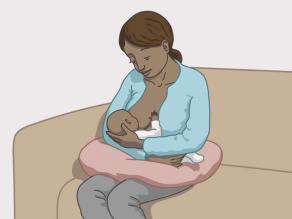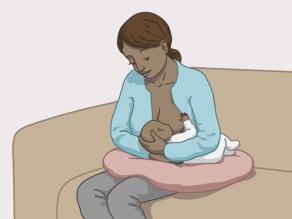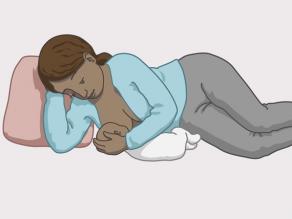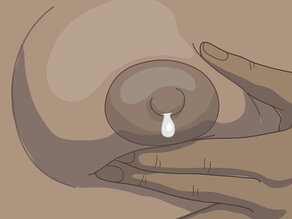Breast-feeding your baby
Sitting or lying
You can sit or lie down to breast-feed.
How to breast-feed
Breast-feed your baby as follows:
Signs that your baby is hungry
In the beginning, most babies feed about every 2 hours, then about every 4 hours. However, every baby is different. Feed the baby when he/she asks for it.
If your baby is hungry, he/she can give you 1 or more of the following signals:
- moves arms;
- moves mouth and tongue;
- licks or sucks hands;
- agitated;
- cries.
Healthy breast-milk
To produce healthy breast-milk for your baby:
- Do not smoke;
- Do not drink alcohol;
- Do not take drugs;
- Do not take medicines without consulting a doctor.
- If you have HIV, you cannot breast-feed your baby.
If you cannot breast-feed, there are other ways to bond with your baby.
Breast-feeding and contraception
A woman is fertile again around 3 weeks after delivery. She can get pregnant if she has unprotected sex, even if she has not yet had a menstrual period.
Breast-feeding is a form of natural family planning.
The breast-feeding method only works under the following conditions:
- The method only works during the first 6 months following delivery. After 6 months it is best to use a method of contraception.
- The woman must only breast-feed her baby. This means the baby only gets breast-milk. There should never be more than 4 hours between feedings during the day and 6 hours between feedings during the night.
- The woman should not express milk. Expressing milk is squeezing the breast with a hand or using a pump to suck milk from the breast.
It is not easy to meet all of these conditions. If you do not meet these conditions, you may have an unintended pregnancy. You should use a method of contraception. While breast-feeding, it is best to use 1 of these methods of contraception:
Start using the mini-pill, hormonal IUD or contraceptive injection at least 6 weeks after delivery. You can start using condoms, the hormonal IUD or the copper IUD earlier. Ask your midwife, gynaecologist or family doctor for advice.




